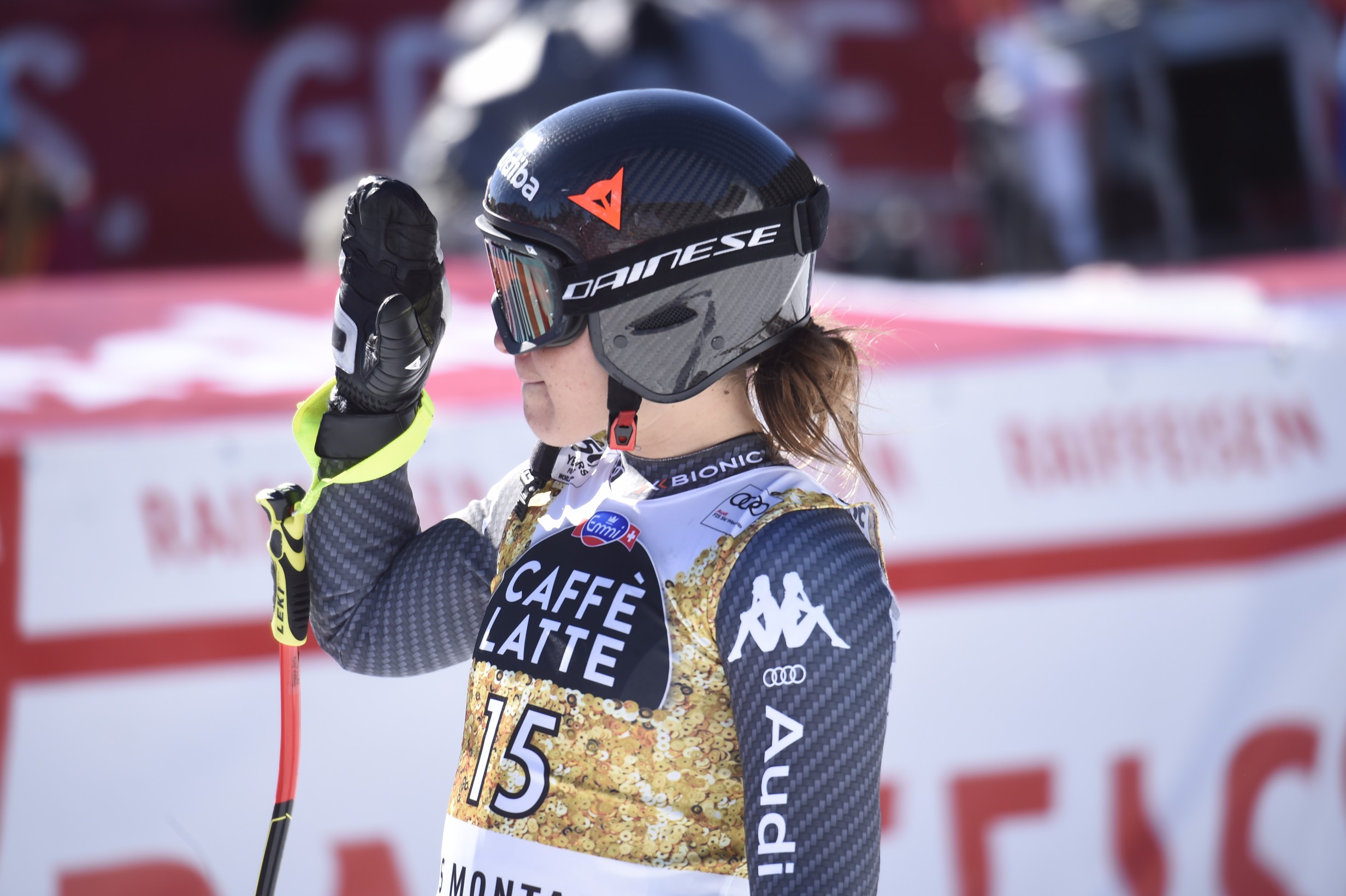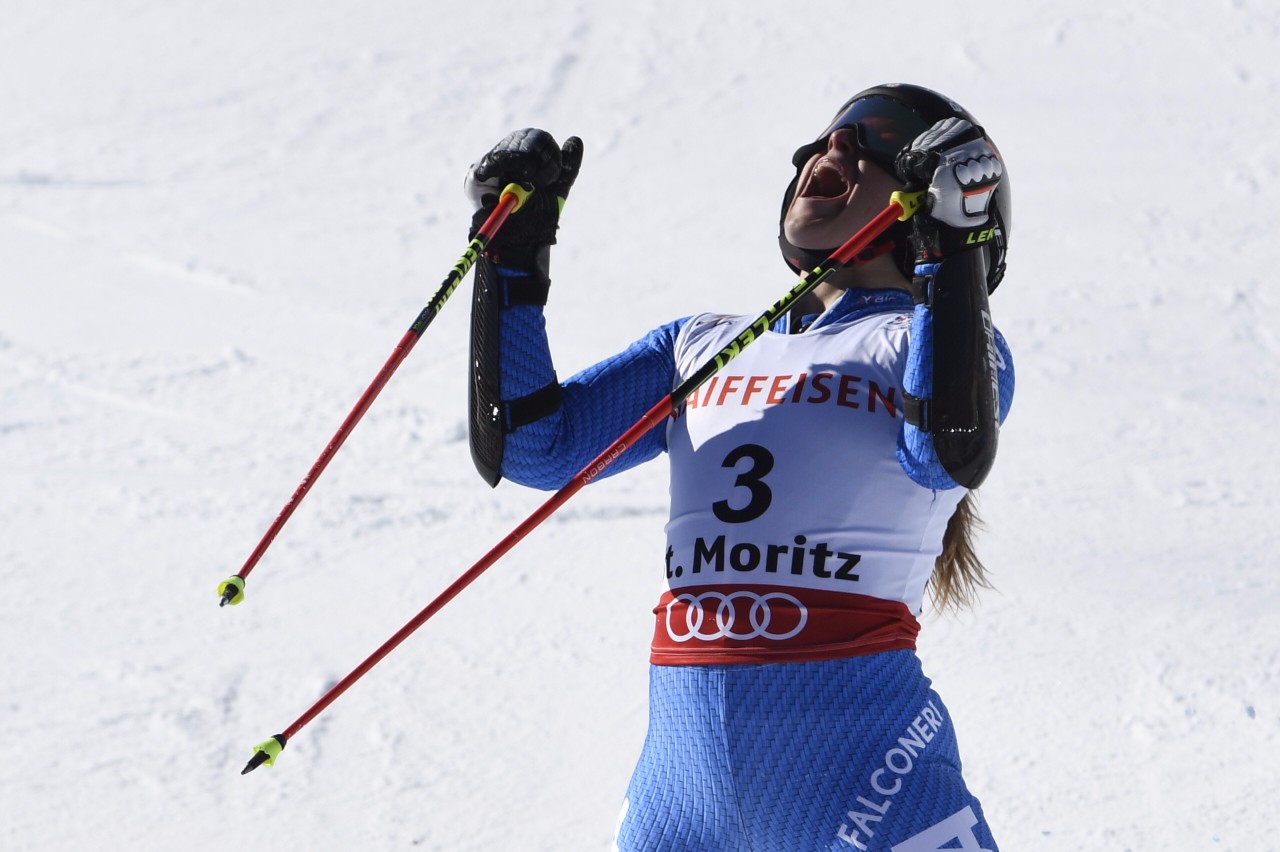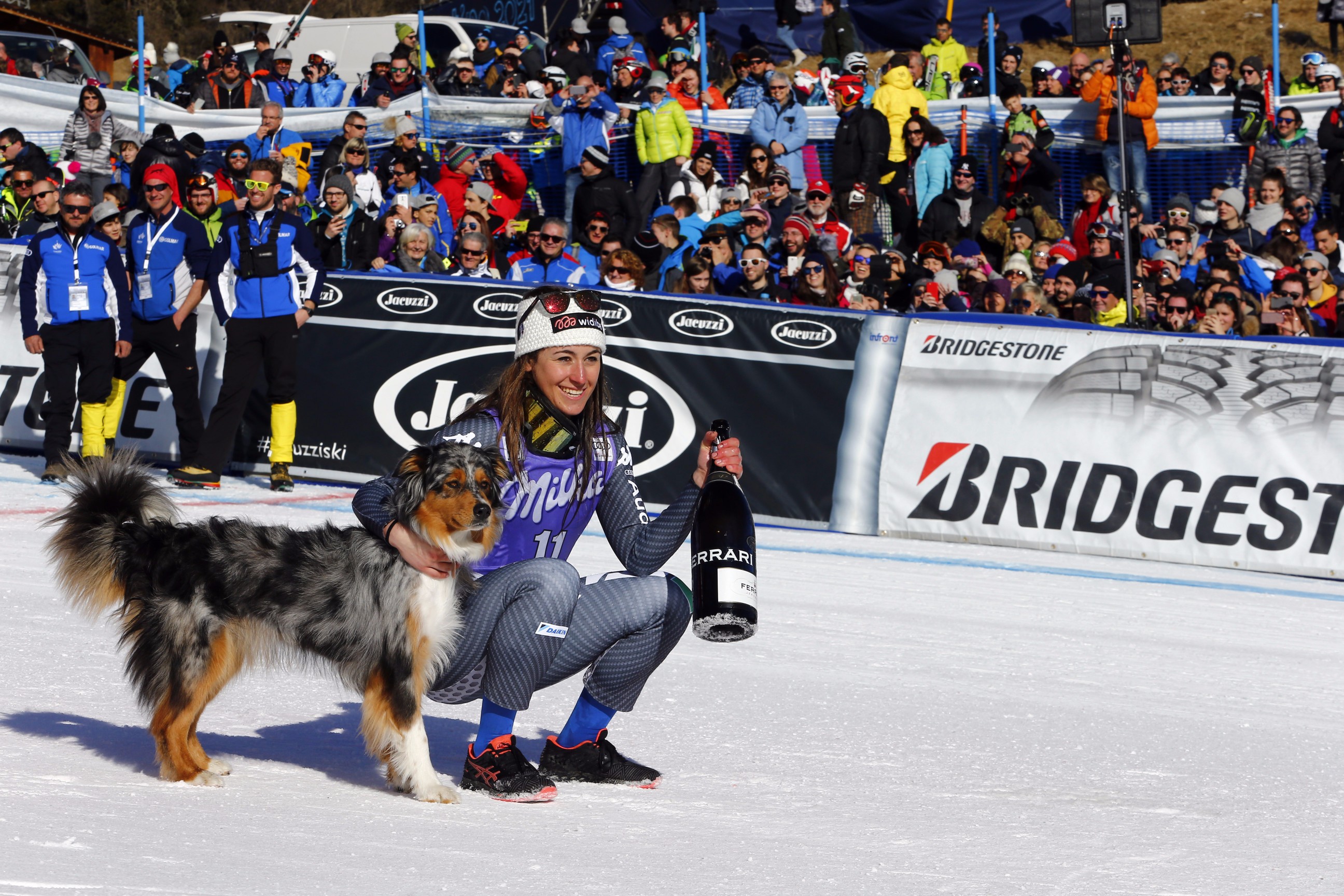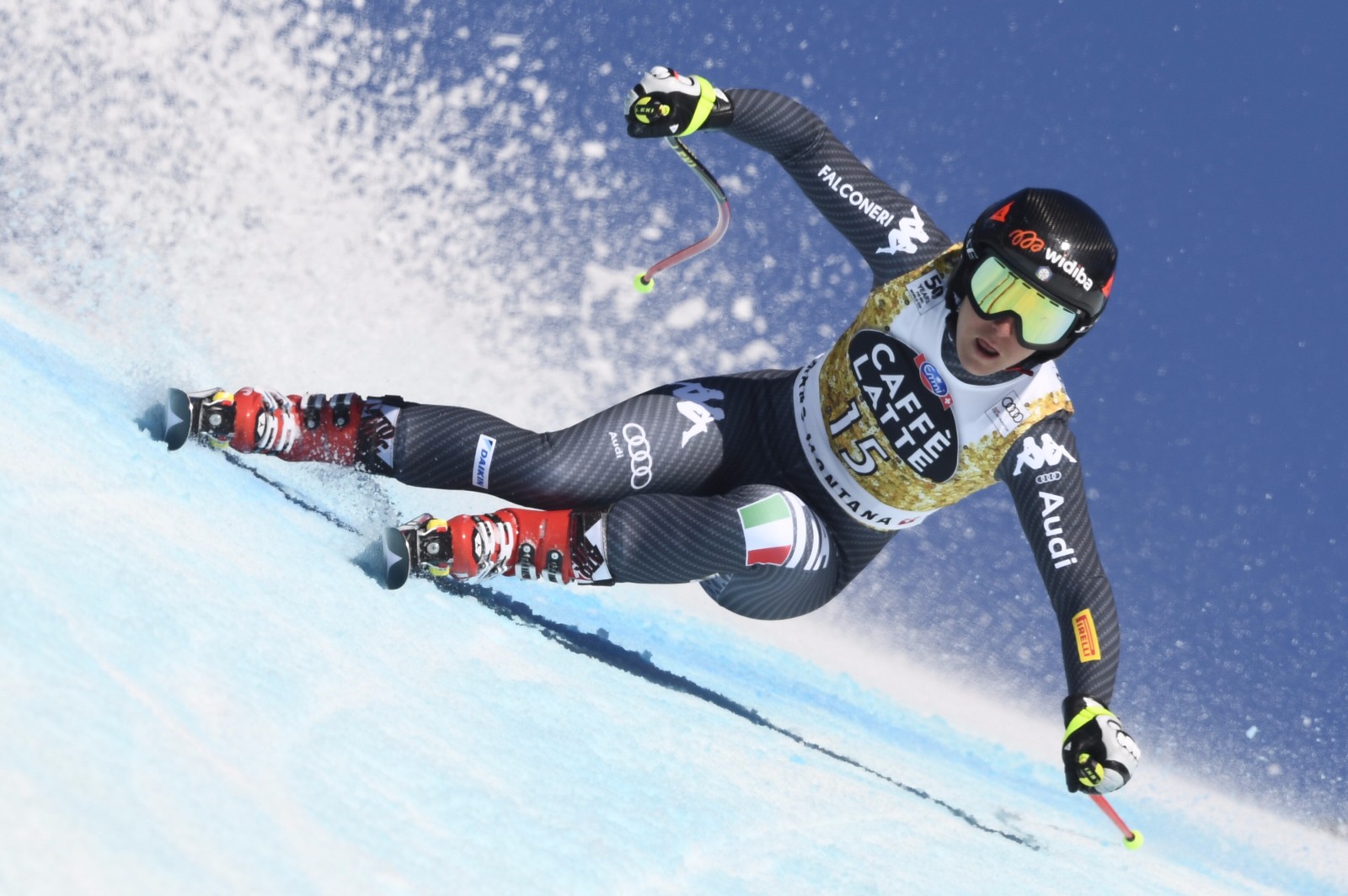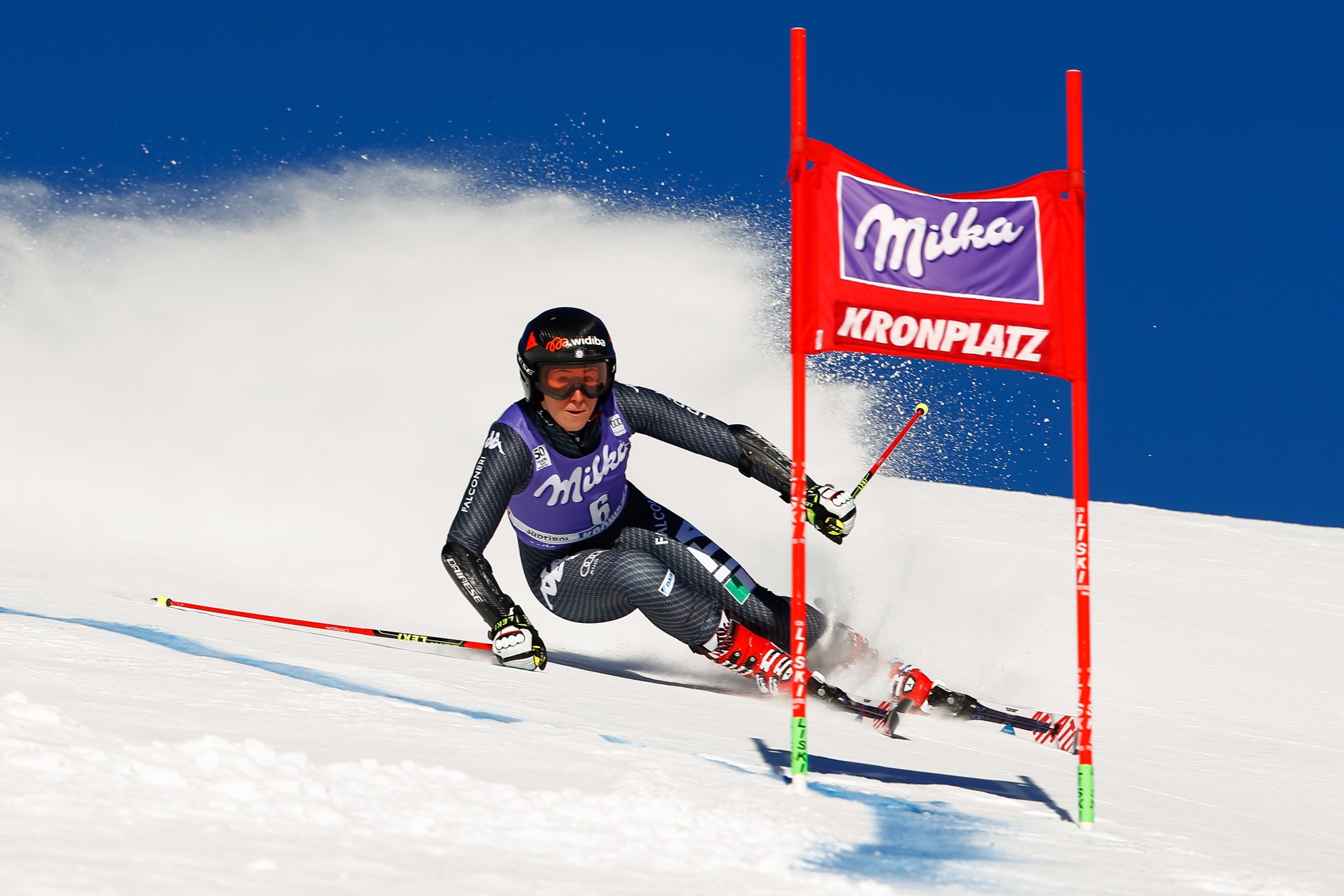We’ve teamed up with Dainese to shine a spotlight on luminaries from across the world of action sports and adventure – from big name athletes to epic events that showcase ambition and achievement that goes above and beyond the norm. Sofia Goggia is an Italian downhill skier who has beaten injury time and time again to reach the top of the sport. Now she’s going for gold at the 2018 Winter Olympic Games.
When the last Winter Olympics arrived in 2014 Italian downhill skier Sofia Goggia was 21 years old. Sofia had just finished fourth in the Super-G (super giant slalom) event at the 2013 World Championships in Schladming having never competed in an elite-level Super-G event before in her life. Out of nowhere, she suddenly had a real chance of medalling at the Sochi Games.
Unfortunately Goggia then suffered a serious knee injury and was forced to undergo surgery and rehabilitation instead of travelling to Russia. American outlets reported on the “Italian medal contender set to miss out on Sochi” and how this would improve Lindsey Vonn’s chances. Big words about a woman who had only competed in a handful of top-level events at the time.
“Like every athlete, you go to the Olympics because you want one thing – a medal.”
“I tore my ACL just before the Olympics, in December,” Sofia remembers. “It was pretty tough because I already had qualification in my pocket.
“I ended up having had four surgeries in total. I always recovered successfully with therapy though, and I know that I can do anything and everything as well as I possibly can now.”

In the end, 2010 Olympic Downhill winner and Super-G bronze-medallist Lindsey Vonn was also forced to pull out of the Sochi Olympics, also with a knee injury.
Fast forward four years and both are back on the mountain fully recovered and with many more World Cup starts to their names. They meet at Jeongseon, South Korea in March 2017 not for the first time, but notably, for the first time on the course where the medal races will take place in the 2018 PyeongChang Olympics.
Having finished 38th in the 2016 World Cup and followed up her first podium finish in Vermont with a string of second and third-place finishes in both Downhill and Super-G, Sofia Goggia is looking to finally go one better and claim her first World Cup gold.
